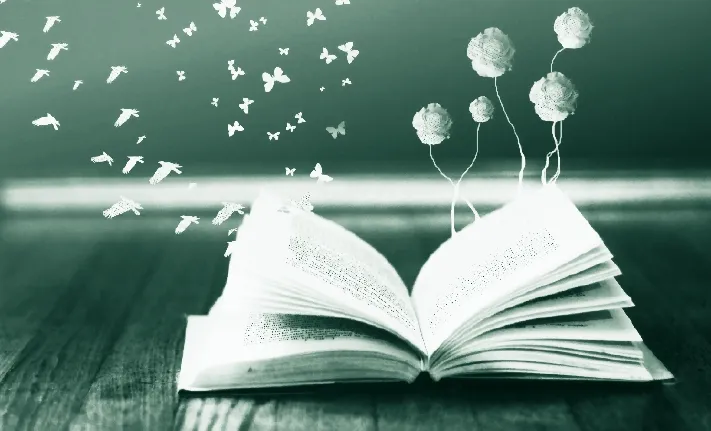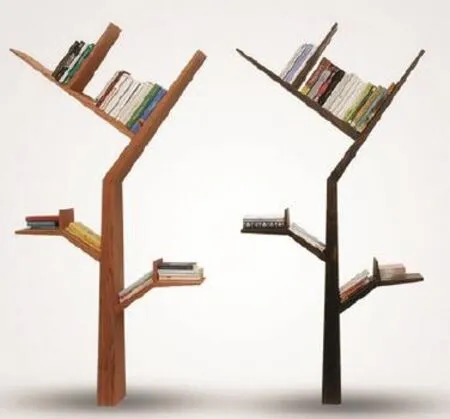为何传统纸质阅读和写作更有益于大脑
2015-03-29byTomChatfeldCass
by Tom Chatfeld Cass 译
为何传统纸质阅读和写作更有益于大脑
Why Reading and Writing on Paper Can Be Better for Your Brain
by Tom Chatfeld Cass 译



网络媒体虽然比传统语言文字、印刷媒体更直观、逼真、吸引力更强,能够满足人们追求感官刺激的需求,但却无法满足人类追求理性思辨、心灵感悟的精神需求。正是在书本的阅读中,人们以自己的视角理解一种思想或审视一个形象,进行心灵的内省并与作品进行情感交流,大脑也因此得到更多刺激和锻炼。
S ome tests show that reading from a hard copy allows better concentration, while taking longhand notes versus typing onto laptops increases conceptual understanding and1)retention.
My son is 18 months old, and I’ve been reading books with him since he was born. I say “reading”, but I really mean “looking at”—not to mention grasping, dropping, throwing,2)cuddling, chewing, and everything else a tiny human being likes to do. Over the last six months, though, he has begun not simply to look but also to recognise a few letters and numbers. He calls a capital Y a “yak” after a picture on the door of his room; a capital H is “hedgehog”; a capital K, “kangaroo”; and so on.
一些测试表明纸质阅读有利于读者更好地集中精神,与使用笔记本电脑输入笔记相比,手写笔记更能增进人们对概念的理解和记忆。
我儿子现在十八个月大,自他出生以来,我便一直和他一起阅读。虽然我说“阅读”,但我指的是盯着书“看”——还有用手抓、丢、扔、抱、咬,和其他所有一切一个幼小生命喜欢做的事情。然而,在过去的半年里,他不再仅仅是盯着书看,还开始认得一些字母和数字。他看到房间门上的一幅图,就把图里大写的“Y”认作“yak(牦牛)”;把大写的“H”认作“hedgehog(刺猬)”;大写的“K”则是“kangaroo(袋鼠)”;诸如此类。
1) retention [rɪ'tenʃ(ə)n] n. 记忆力
2) cuddle ['kʌd(ə)l] v. 拥抱, 搂抱
Reading, unlike speaking, is a young activity in evolutionary terms. Humans have been speaking in some form for hundreds of thousands of years; we are born with the ability to acquire speech etched into our3)neurones. The earliest writing, however, emerged only 6,000 years ago, and every act of reading remains a version of what my son is learning: identifying the special species of physical objects known as letters and words, using much the same neural circuits as we use to identify trees, cars, animals and telephone boxes.
It’s not only words and letters that we process as objects. Texts themselves, so far as our brains are concerned, are physical landscapes. So it shouldn’t be surprising that we respond differently to words printed on a page compared to words appearing on a screen; or that the key to understanding these differences lies in the geography of words in the world.
For her new book, Words Onscreen: The Fate of Reading in a Digital World, linguistics professor Naomi Baron conducted a survey of reading preferences among over 300 university students across the U.S., Japan, Slovakia and Germany. When given a choice between media ranging from printouts to smartphones, laptops, e-readers and desktops, 92% of respondents replied that it was hard copy that best allowed them to concentrate.
从进化的角度讲,阅读与说话不同,是一种历史相对较短的活动。成千上万年以来,人类一直以某种形式说话;我们具有与生俱来铭刻在神经元中的说话能力。而最早的写作(距今仅有六千年)和阅读的每一个行为,仍然是我儿子学习的模板:识别字母和单词构成的这特殊实体种类,使用的神经环路几乎和我们识别树木、汽车、动物和电话亭是一样的。
我们的大脑像处理实物一样处理单词和字母,但这并不局限于单词和字母。文本本身对于我们的大脑而言,也是一种物理景观。因此,相较于屏幕上的文字,我们对于印刷在纸张上的文字的反应有所不同,这并不令人意外;理解这些差异的关键在于文字在世界上的结构特征。
在语言学教授内奥米·巴伦的新书《屏幕上的文字:数字世界里阅读的命运》中,她针对来自美国、日本、斯洛伐克和德国的300多名大学生,开展了阅读偏好的调查。面对各种媒体选择:从纸质版文本到智能手机、笔记本电脑、电子阅读器和台式机,92%受访学生的回答是:纸质版文本最有利于他们集中精神。

3) neurone ['njʊərəʊn] n. 神经细胞, 神经元
4) exclamation [eksklə'meɪʃ(ə)n] n. 感叹号, 惊叹号
5) hew [hjuː] v. 开辟,开采
6) verbatim [vзː'beɪtɪm] adv. 逐字地


This isn’t a result likely to surprise many editors, or anyone else who works closely with text. While writing this article, I gathered my thoughts through a version of the same principle: having collated my notes onscreen, I printed said notes, scribbled all over the resulting printout, argued with myself in the margins, placed4)exclamation marks next to key points, spread out the scrawled result—and from this landscape5)hewed a (hopefully) coherent argument.
What exactly was going on here? Age and habit played their part. But there is also a growing scientifc recognition that many of a screen’s unrivalled assets—search, boundless and bottomless capacity, links and leaps and seamless navigation—are either unhelpful or downright destructive when it comes to certain kinds of reading and writing.
Across three experiments in 2013, researchers Pam Mueller and Daniel Oppenheimer compared the effectiveness of students taking longhand notes versus typing onto laptops. Their conclusion: the relative slowness of writing by hand demands heavier “mental lifting”, forcing students to summarise rather than to quote6)verbatim—in turn tending to increase conceptual understanding, application and retention.
这个调查结果对于许多编辑来说并不惊奇,对其他需要经常与文本打交道的人亦然。写这篇文章时,我以同样的原则来整理自己的思路:在网上搜集资料,然后打印出来,在打印稿上涂涂写写,在空白处写下对自己观点的质疑,在关键的观点旁边打上感叹号,在纸张上潦草地写满想法——希望从这样的打印稿上能够开辟出一个清晰的论点。
究竟是怎么一回事呢?年龄和习惯是一部分原因。但是同时也有越来越多的科学依据显示,在谈到某些类型的阅读和写作时,屏幕拥有独一无二的有利条件——搜索、无限而深不可测的潜力、链接、跨越和无缝导航,但对于某类阅读和写作而言,这些都毫无益处甚至具有破坏性。
在2013年的三个实验中,研究人员帕姆·米勒和丹尼尔·奥本海默对学生做普通手写笔记和使用电脑做笔记的有效性进行对比。他们得到的结论是:手写笔记这个相对缓慢的过程更注重“精神提升”,促使学生学会总结,而不是一味逐字照抄——从而有利于学生对概念的理解,应用和记忆储存。
In other words, friction is good—at least so far as the remembering brain is concerned. Moreover, the textured variety of physical writing can itself be significant. In a 2012 study at Indiana University, psychologist Karin James tested five-year-old children who did not yet know how to read or write by asking them to reproduce a letter or shape in one of three ways: typed onto a computer, drawn onto a blank sheet, or traced over a dotted outline. When the children were drawing freehand, an7)MRI scan during the test showed activation across areas of the brain associated in adults with reading and writing. The other two methods showed no such activation.
Similar effects have been found in other tests, suggesting not only a close link between reading and writing, but that the experience of reading itself differs between letters learned through handwriting and letters learned through typing. Add to this the help that the physical geography of a printed page or the heft of a book can provide to memory, and you’ve got a conclusion neatly matching our embodied natures: the varied, demanding, motor-skill-activating physicality of objects tends to light up our brains brighter than the placeless, weightless scrolling of words on screens.
In many ways, this is an unfair result, effectively comparing print at its best to digital at its worst. Spreading my scrawled-upon printouts across a desk, I’m not just accessing data; I’m reviewing the8)idiosyncratic geography of something I created, carried and adorned. But I researched my piece online, I’m going to type it up onscreen, and my readers will enjoy an onscreen environment expressly designed to gift resonance: a geography, a context. Screens are at their worst when they9)ape and mourn paper. At their best, they’re something free to engage and activate our wondering minds in ways undreamt of a century ago.
换言之,纸质阅读大有裨益——至少在大脑记忆这方面如此。此外,多种多样独特的手写字体本身就意义深重。在2012年印第安纳大学的一项研究中,心理学家卡琳·詹姆斯对还不会阅读和书写的五岁儿童进行了测试,让他们以三种方式之一再现一个字母或图形:使用电脑输入,在空白纸张上涂画,或者是沿着虚线轮廓临摹。核磁共振扫描显示,在测试过程中,当孩子们徒手画画时,他们大脑活跃的区域与成年人在阅读和写作时的一样。而当孩子们采取其他两种方式时,大脑并没有显示出这样的活跃状态。
在其他的测试中也得出了相似的结果,这不仅体现了阅读和写作之间紧密的联系,同时表明了阅读手写的文字和电脑输入的文字的体验大不相同。再者,打印出来的纸张其物理刺激特征和书本的重量均有利于大脑记忆,所得的结论完全与我们的本性一致:多样化的、耗费心神的、需要运动技能激活的实物,相对于无物理空间特征、没有重量的屏幕文字,更有利于激活我们的大脑。
在许多方面,这并不是一个公平的结果,实际上是用打印稿最大的优点和电子图书最差的方面进行比较。通过在桌子上摊开我潦草涂写的打印稿,我获得的不仅仅是数据;我在回顾自己创造的、抄写过来的或者涂饰过的某些东西的独特物理特征。但是我也在网上研究自己的写作,我也会把它输入电脑,使我的读者们能够享受显然是为了产生共鸣而设计的网络环境:一个环境、情境。屏幕最差劲的方面表现在其模仿纸张或是悼念纸张。而屏幕最大的好处是可以免费获取信息,它以一个世纪前人们意想不到的方式激活我们好奇的大脑。



7) MRI abbr. magnetic resonance imaging 核磁共振成像
8) idiosyncratic [,ɪdɪəsɪŋ'krætɪk] adj. 特殊物质的, 特殊的, 异质的
9) ape [eɪp] v. 模仿
Above all, it seems to me, we must abandon the notion that there is only one way of reading, or that technology and paper are engaged in some implacable war. We’re lucky enough to have both growing self-knowledge and an opportunity to make our options as fit for purpose as possible—as slippery and searchable or slow with friction as the occasion demands.
I can’t imagine teaching my son to read in a house without any physical books, pens or paper. But I can’t imagine denying him the limitless words and worlds a screen can bring to him either. I hope I can help him learn to make the most of both—and to type/copy/paste/sketch/scribble precisely as much as he needs to make each idea his own.
在我看来,最重要的是,我们必须摒弃阅读只有一种方式的思想,或者是科技和纸张正陷于残酷的战争中这样的概念。我们很幸运拥有日益增长的自我认知,选择适用自身需求的机会也更多了——根据不同的需求选择屏幕阅读或者纸张阅读。
我无法想象在一座没有纸质书籍或者是纸笔的房子里教我儿子阅读。我也无法否认电脑能够给他带来认识无限单词和大千世界的机会。我希望我可以帮助他充分利用两者——打字、复制、粘贴、草拟和涂鸦,尽可能充分利用种种方法来表达自己的想法。
